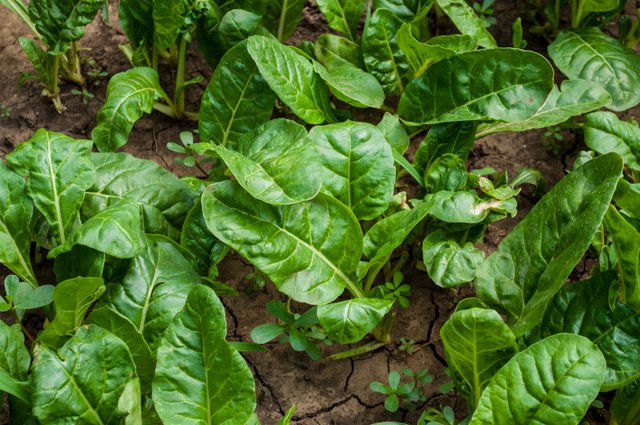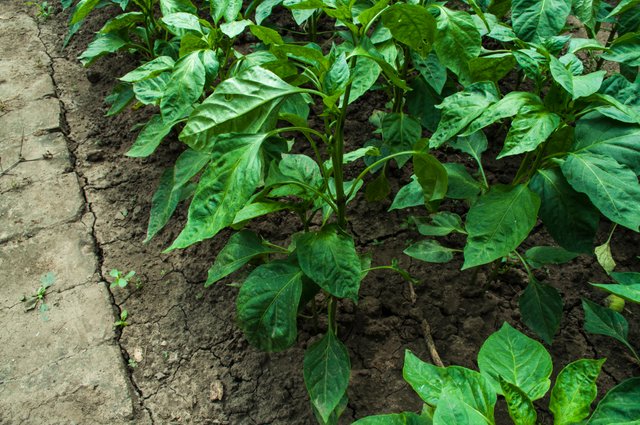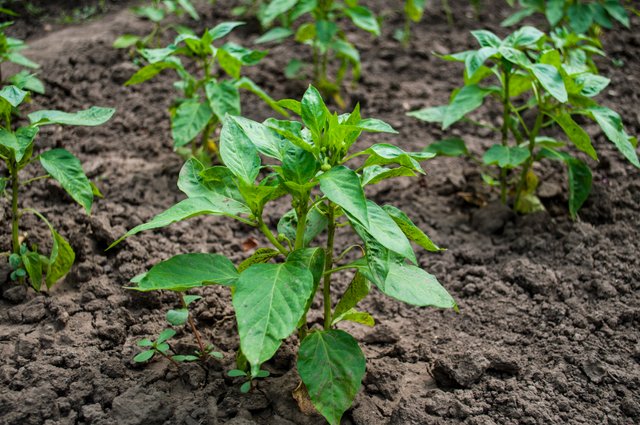This is my mom's garden. She loves all the work related to gardening. Besides growing fruit and vegetables, she adores flowers, too, but that is another subject. I asked her to explain some basic things when it comes to gardening.


The general rule is to prepare the soil. The first thing to do is to dig the ground with the shovel in October or November in order frost to come into the ground during the winter, and as a result the ground becomes soft. Somewhere in April, before the vegetables are being planted, the garden needs to be shoveled again and the natural fertilizer (Azote - Phosphor - Potassium) is put into the soil.
When it comes to TOMATOES at the end of April the seedlings of about 20cm in height are bought and they are held in the shade for about a day, sprinkled with water during that time. Then the holes are dug in order to put the seedlings in, with the distance of about 50cm among them. Tomatoes are usually ripe in the middle of June.
When it comes to PAPRIKA (bell peppers) the procedure is the same, except the distance among the seedlings is a bit closer. My mother bought the seedlings, she didn't use the seed. They are usually ripe in July.
CUCUMBER seed is put into the holes previously dug. The holes are about 5-10cm deep.
And the real important thing is to water the garden. The best period for that is early in the morning, or late in the evening. Never water the vegetables in midday when it's hot because they can get sunburned.
This is just some basic info when it comes to this subject. If I asked my mom for more, I would probably write a book, so I decided to concentrate on the pictures and add some "quick" valuable information about fruit and vegetables I took photographs of. :) This is how the garden and the products look like in June, 2018, most of them still not ripe enough.


“Swiss chard is a nutritional powerhouse -- an excellent source of vitamins K, A, and C, as well as a good source of magnesium, potassium, iron, and dietary fiber.”
Source (https://www.webmd.com/diet/features/swiss-chard-9-healthy-facts#1)


“The nutritional benefits of green beans are hard to argue with. These delicious and crunchy beans are low in calories and fat and contain no cholesterol. The fiber content is very high, and it also provides some of your daily protein requirements. They also act as an easy source for acquiring vitamins like vitamin A, C, K, B6, and folic acid. In terms of minerals, green beans are a good source of calcium, silicon, iron, manganese, potassium, and copper.”
Source (https://www.organicfacts.net/health-benefits/vegetable/green-beans.html)



“The health benefits of tomatoes can be attributed to their wealth of nutrients and vitamins, including an impressive amount of vitamin A, vitamin C, and vitamin K, as well as significant amounts of vitamin B6, folate, and thiamine. They are also a good source of potassium, manganese, magnesium, phosphorus, and copper. They have dietary fiber and protein, as well as a number of organic compounds like lycopene that contribute to their health benefits.”
Source (https://www.organicfacts.net/health-benefits/vegetable/tomatoes.html)




“You need between 75 and 90 milligrams of vitamin C per day, and one cup of chopped green bell peppers provides 119.8 milligrams. When you get enough vitamin C, you're less likely to develop infections, and your skin, teeth, gums and blood vessels are healthier and work more efficiently. The same serving of chopped green bell peppers contains 0.55 milligrams of vitamin E toward the 15 milligrams you should take in every day. Vitamin E helps protect your cells from damage and supports a strong immune system.”
Source (http://healthyeating.sfgate.com/benefits-eating-green-bell-peppers-4245.html)

“The nutrients found in parsley include vitamin A, K, C, and E, thiamin, riboflavin, niacin, vitamin B6, vitamin B12, pantothenic acid, choline, folates, calcium, iron, magnesium, manganese, phosphorus, potassium, zinc, and copper. It is also a very good source of volatile compounds such as myristicin, limonene, eugenol, and alpha-thujene. Its leaves contain energy, carbohydrates, fats, and protein.”
Source (https://www.organicfacts.net/health-benefits/herbs-and-spices/health-benefits-of-parsley.html)


“Cucumbers are loaded with the mineral silica, which is an essential component for healthy connective tissue (muscles, ligaments, cartilage, bone, & skin). It is also full of ionic potassium, magnesium, & vitamin C which give it a powerful alkalizing effect within the body. Additionally, cucumbers are particularly rich in fluids that hydrate the skin, joints, and tissues…Cucumbers also contain triterpene phytonutrients called cucurbitacins A, B, C, D & E.”
Source (https://superhumanentrepreneur.com/vitamins-in-cucumbers/)

“The main punch a peach packs is vitamins. Specifically, a peach boasts 10 different kinds: A, C, E, K and six of the B complex vitamins.”


“Raspberries are excellent sources of vitamin C, manganese, and dietary fiber. They are also rich in B vitamins, folic acid, copper, and iron. They have the highest concentration of antioxidant strength amongst all fruits. This is due to its high concentration of ellagic acid, anthocyanins, gallic acid, quercetin, cyanidin, catechins, pelargonidin, kaempferol and salicylic acid.”
Source (https://www.organicfacts.net/health-benefits/fruit/health-benefits-of-raspberry.html)

“Apples are full of healthy antioxidants, fiber, vitamins and minerals. One medium sized apple contains 95 calories and 4.4 g of dietary fiber. In addition, an apple is a good source of potassium, phosphorus, calcium, manganese, magnesium, iron and zinc. Apples also contain vitamins A, B1, B2, B6, C, E, K, folate, and niacin. Apples come in different shapes and sizes, so the amount of calories and vitamins in 1 apple varies. Best of all, apples contain no fat, sodium or cholesterol.”
Source (https://www.fitday.com/fitness-articles/nutrition/healthy-eating/the-nutrition-of-apples.html)


“Grapes are a great source of phytonutrients, mainly phenols, and polyphenols, and contain other important vitamins such as vitamin K, A, C, and vitamin B6. They are also rich in thiamine, riboflavin, niacin, and folate, and contain minerals like potassium, calcium, magnesium, phosphorus, and sodium. Grapes have a high water content that helps in keeping the body hydrated, and also contain dietary fiber, healthy carbs, antioxidants, and a moderate amount of protein. Flavonoids, like myricetin and quercetin, in grapes help reduce the damage caused by free radicals and slow down aging.”
Source (https://www.organicfacts.net/health-benefits/fruit/health-benefits-of-grapes.html)


“Modern science now tells us that the mineral, vitamin, and organic compound content of pear species is the reason for its vast health potential. Some of these active and effective components are potassium, vitamin C, vitamin K, phenolic compounds, folate, dietary fiber, copper, manganese, magnesium, as well as B-complex vitamins.”
Source (https://www.organicfacts.net/health-benefits/fruit/pears.html)
I hope you like it!
Hey, thanks for sharing some of your mom's garden with us and the valuable info about the fruit and vegetables. I totally like growing as much of my own fruits and vegetables as i can. Thanks again for sharing!
Downvoting a post can decrease pending rewards and make it less visible. Common reasons:
Submit
You are welcome and I am glad my mom any you share the same healthy passion :)
Downvoting a post can decrease pending rewards and make it less visible. Common reasons:
Submit
Congratulations @dreamdiaries! You have completed some achievement on Steemit and have been rewarded with new badge(s) :
Click on the badge to view your Board of Honor.
If you no longer want to receive notifications, reply to this comment with the word
STOPTo support your work, I also upvoted your post!
Downvoting a post can decrease pending rewards and make it less visible. Common reasons:
Submit